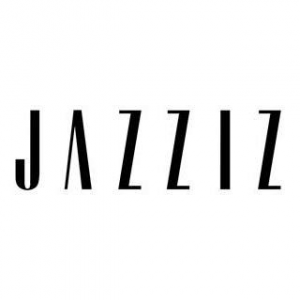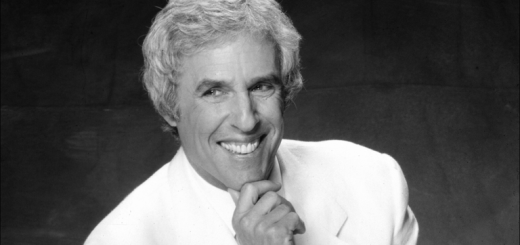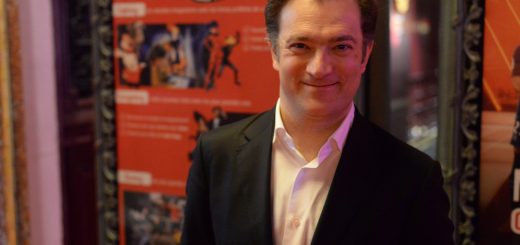Jazz and Coffee (with an extra shot)In the mid-’90s, one of my high school pals, who was doing consulting work after his company was acquired by AOL, invited me to Seattle to meet with Starbucks CEO Howard Schultz and his executive team. Schultz didn’t attend that first meeting, and with only around 150 stores back then, Starbucks was positioning itself for an aggressive worldwide expansion. They were also considering adding music to their menu.
Jazz seemed like the right fit for the Starbucks crowd, and, while some critics have loathed that connection, I believe that in some ways, coffee—from brewing to drinking—has parallels to playing and listening to jazz. Both are improvisations of a sort. After brainstorming ideas over the course of a few meetings, the Starbucks team and I agreed to create the JAZZIZ Blend, offering a free issue of JAZZIZ magazine and a CD with a purchase of a one-pound bag of our branded coffee. Starbucks saw this as a cool way to sell more bags of coffee (ground and beans), knowing that their core business is selling cups of coffee. I saw it as a way to cultivate a new jazz audience.
At the time, I had just turned over my JAZZIZ brand to the incapable hands of Time Warner. New to the Time Warner family, I ran my proposed deal with Starbucks up the flagpole. Months went by and … crickets. So I flew to New York to see what gives. I was confidentially informed by a TW executive that, because they now controlled the JAZZIZ trademark, I was no longer allowed to make distribution and promotional decisions with the brand. Flummoxed to the point of fury—and having endured a litany of similarly ego-driven entanglements with the media giant—I knew that the relationship between JAZZIZ and Time Warner was nearing its end, and I began seeking an exit. But I’m getting ahead of myself.
Starbucks loved the idea, but got tired of waiting. They also knew folks at Capitol Records who had their own jazz brand: Blue Note. One day, while visiting Blue Note’s legendary leader Bruce Lundvall, he told me about a deal that his label had put together for Blue Note brand coffee at Starbucks. I didn’t respond with, “That was my deal.” I wasn’t even sure that the Blue Note name alone would move coffee or jazz. It felt like a half-baked part of my recipe, but I figured that saying anything would just seem like sour grapes. I was also eagerly waiting for the ink to dry on my Time Warner exit contract and to take JAZZIZ back home with me.
In those days, if you lived in the Southeastern United States, when Starbucks hadn’t yet entered the market, we enjoyed a coffeehouse chain called Barnie’s. It was Starbucks-like, with over 100 stores, but with less caffeinated prices (Seinfeld nicknamed Starbucks “Fivebucks”) and a more flavorful and larger variety of beans. Like many of the so-called second-wave coffee houses at the time, Barnie’s sold cups of coffee but had fresher pastries and was better positioned than Starbucks, back then, to offer beans and grinds in various blends. They also pushed teas long before Teavana. Sans an app or even a frap, I simply enjoyed Barnie’s focus on the exploration and discovery of different kinds of coffee from around the world, as opposed to different ways to serve up dark roast. I decided to reach out to the owner, Phil “Barnie” Jones, with my idea.
Phil wasted no time calling me back and scheduling a meeting in the JAZZIZ offices, which were in Gainesville, Florida, at the time. I came clean and told Phil the Starbucks story and, even though he was my second choice, he was glad it worked out that way. Soon I was heading down to Barnie’s headquarters in Winter Park, only two-hours away by car, to select beans, roasting, packaging and logistics for the JAZZIZ Blend at Barnie’s. The JAZZIZ Blend became Barnie’s biggest seller, which wasn’t surprising considering that a JAZZIZ bag of coffee came with a magazine and CD. Particularly for customers interested in exploration and discovery, the choice was easy, and Barnie’s sold over 5,000 bags a month.
During one of Phil’s trips to see me in Gainesville, we drove around town and I opined on a great spot for a Barnie’s store across from the University of Florida library. We had a sobering conversation that veered into his concerns of the looming threat of Starbucks invading his hard-earned Southeast market, where, for a while, he held the largest chain of coffee stores in the country. This gave me another idea. With the success of JAZZIZ Blend in mind, I proposed to Phil that, instead of trying to compete head-to-head with Starbucks, he consider modifying his current store concept and create Barnie’s Jazz Cafés—essentially music bars with a lounge-like music-listening atmosphere and a small stage for unplugged acts. We started designing and seeking locations for these venues and then, as fate would have it, he and his wife decided to sell their shares in Barnie’s to the Sara Lee Corporation, which then turned around and sold them to a private equity group. That same year Starbucks acquired Hear Music and turned a handful of Starbucks into cafe/music stores, and that private equity group sold over 50 Barnie’s stores to—wait for it—Starbucks. Today, Hear Music no longer exists but Starbucks has since struck a deal with the one-time jazz label Concord Records, signing artists from Paul McCartney to Joni Mitchell.
Which brings me back to jazz and coffee. It’s not just Starbucks and Barnie’s that made the connection. Peet’s Coffee once launched a radio station on Pandora and their marketing shtick was that their bold flavors reflected the explorations of jazz greats like Miles Davis and Jason Moran. And while it’s been said that “America runs on Dunkin’,” the team that conjured up that campaign says their redesigned stores were themed after America’s own music, jazz, in order to create a certain music environment. Though I don’t see or hear much in the way of jazz at Dunkin’ Donuts, maybe someone realized they weren’t that kind of cool and dropped that pitch like they did their Coffee Coolattas.
Enjoying coffee at a coffee house has its merits, though some prefer making their own at home, just as some would rather listen to jazz in their own space. I know a lot of people say they wake up and stumble into the kitchen and turn on jazz for their early-AM attitude while going through a morning ritual of brewing and drinking coffee. And while there are probably more people who enjoy the same coffee and same brand every day, with that certain “pop music-like” familiarity, there are others who enjoy the unexpected, who think that trying a new coffee blend is something like spinning a new album. Some people constantly crave exploration and discovery.
Maybe it’s time to revisit those jazz cafés, the JAZZIZ Blend or even think of a fresh way for JAZZIZ subscribers to check out new coffee or even a coffee mug with your favorite JAZZIZ cover. Click here.
Hit me back with an email if you have your own thoughts about jazz and java … or if you just think I drank too much coffee. — Michael Fagien





















































































































































































































































































































































































